Ask anyone you know which cuisine they love most and I’m betting most will go for Italian. Me too so the prospect of eating nothing else for a week at the Idler retreat in Umbria last week couldn’t have made me happier.
The highlight was the lunches - a resplendent array of colourful dishes which were clearly concocted from what was available in the kitchen including leftovers from the previous day. A mixture of salads, fried and baked vegetable dishes, the odd bit of roasted meat and some reheated pasta.
A lot were made into gratins or sformati which, as Elizabeth David describes them in Italian Food, are “a cross between a soufflé and what we should call a pudding”. (I’ve recreated the recipe we were shown in the cookery class below.)
I was particularly impressed by the use of leftover mash in a gratin and (trickier to achieve) little deep-fried breadcrumbed balls like potatoey arancini.
Fennel gratins appeared almost every day. The kitchen staff ate the same lunch so I suspect that was one of their favourites.
There were also simple tarts, made with ready-rolled frozen pastry and a rather wonderful slashed pastry slice which looked like the Very Hungry Caterpillar. (Maybe a way to get kids to eat their greens …)
A pancake served the previous night with a dollop of sauce as an antipasto. reappeared cold, in decorative rolls like a wrap.
Courgettes and aubergines were sliced, fried and artfully arranged, sometimes with a topping. There were deep-fried courgette flowers
and ratatouille-type dishes with courgettes, aubergines and tomatoes …
… quartered peppers topped with cheese and roasted . . .
Veg (often cauliflower) mixed with what I suspect was leftover pasta sauce and made into an instant veggie bake.
Salads - generally chopped to make them easier to serve and share. Classics like panzanella, tomato salad and tuna and white beans …
Stuffed eggs. (Umbrian cuisine relies heavily on eggs)
The cooks’ creativity was endless and proved all you need when you’re feeding a crowd is a bit of imagination and a lot of platters.
Two things really stood out - apart from how delicious it all was.
How simple the seasoning was which is typical in this part of Italy. Very little garlic, few herbs, no chilli. And just how long - and slowly - the veg were cooked. They were definitely soft rather than al dente.
Anyway the leftovers dish par excellence was the sformato and here’s how to make it.
I’d normally charge for new - or new to me - recipes but as it’s basically Gessy’s and Villa Pia’s I’m making it free for everyone to read. But if you’d like to make a contribution to my writing, get other exclusive content and join in my online wine tastings it would be great if you’d take out a paid subscription which costs as little as £5.
The art of sformato
A low-cost home-style dish which you can make with whatever veg you have to hand. It would, traditionally, I suspect, have been made with vegetables fresh from the garden. Many recipes base it on a béchamel but our teacher Gessy didn’t. It makes the recipe simpler and you only need one pan.
She did however make in a mould which you could if you have one but frankly it’s fine in a baking dish.
If you want it to look more elegant and colourful (it is, admittedly rather beige) you could use vegetables of the same colour - say onions, carrots, swede, butternut squash or peas, asparagus and spinach, (though bear in mind broccoli or asparagus cooked this long could turn an unlovely sludge)
“it is a capital way of using green peas, French beans, spinach, fennel or any vegetables which are plentiful but no longer at the tender stage when they may be eaten simply with butter” writes Elizabeth David.
You could also add a bit of crisped up bacon or ham to it if you weren’t a veggie and wanted to make it more substantial.
Gessy’s sformato
(She did everything by eye but I’ve given approximate quantities)
4 for a supper dish, 6 for a side
About 1 kg of veg - I used 1 medium sized potato, 1 large carrot, 1 turnip, 1 large courgette and a small cauliflower
About 40g freshly grated parmesan or mature pecorino, saving some for the topping
Freshly grated nutmeg (a good pinch if you’re using it ready-ground)
2 tsp vegetable bouillon powder
3 eggs (I used medium-sized ones)
40-45g fine dried breadcrumbs - depending on the size of the eggs you use - saving some for the topping
Salt and freshly ground white pepper to taste
You will also need a well oiled or buttered baking dish.
Peel or simply wash the vegetables, and leave whole or cut into large chunks.(see photo). Cover with water, bring to the boil, add salt then simmer until soft enough to squish with a fork (about 45/50 minutes)
Strain off the cooking liquid, which you could use for making soup if you were feeling particularly frugal, and leave the veg to cool for about 15 minutes then blitz them to a rough purée with a hand-held blender or in a food processor.
Stir in the grated parmesan, saving some for the topping, add the nutmeg and vegetable bouillon powder then beat in the eggs. Add enough breadcrumbs to thicken the mixture without making it too solid, again saving some for the topping. (I used about 40g.)
Check the seasoning, adding a little salt and white pepper to taste if you think it needs it and tip into a well oiled or buttered baking dish. Mix the remaining breadcrumbs and parmesan together and scatter over the dish.
Bake at 180°C/160°C fan/Gas 5 for about 40 minutes until puffed up and nicely browned.. Leave for about 15 minutes. It’s nicer warm or served at room temperature.
You can serve it on its own (Italians might accompany it with a light tomato sauce) or as a side with roast chicken, scallopine or a leftover roast. Or, of course, an array of veggie dishes like the ones above.
For more about Villa Pia and the other events they host visit their website villapia.com






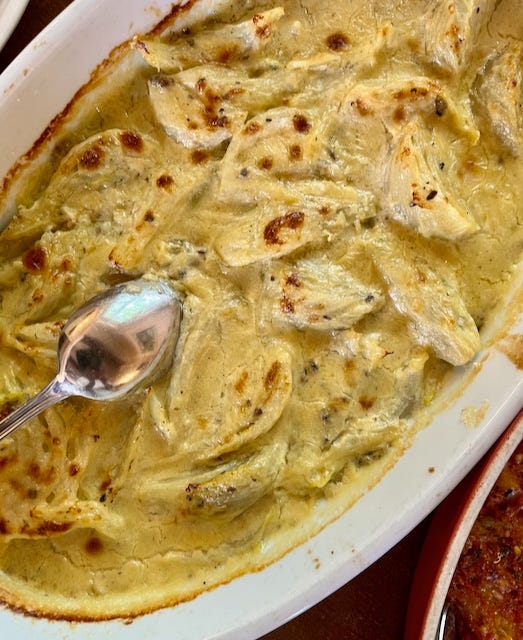
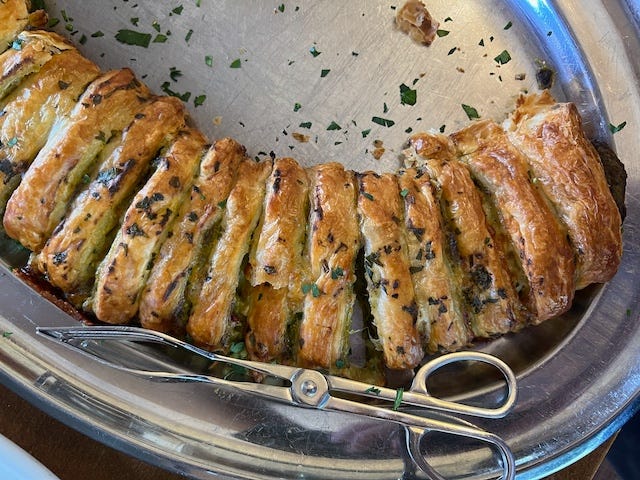
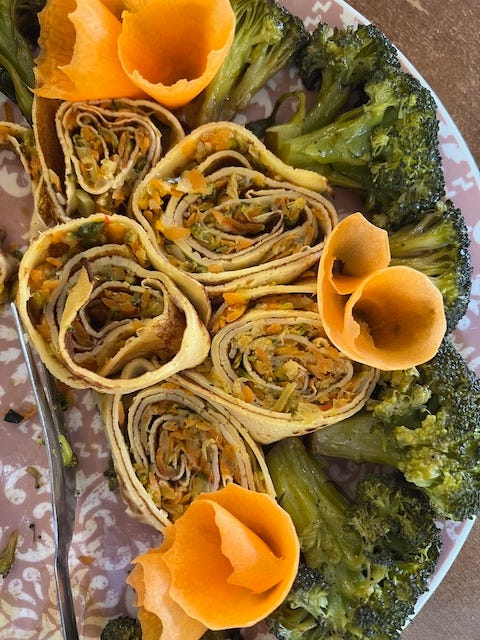
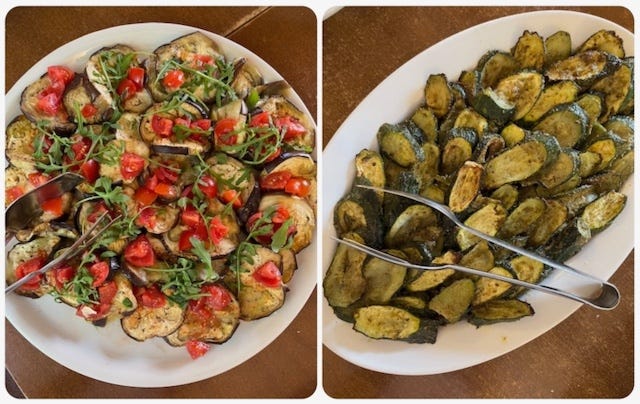


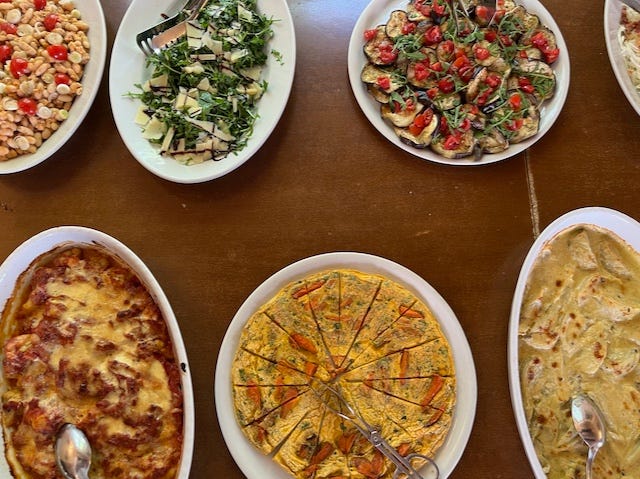


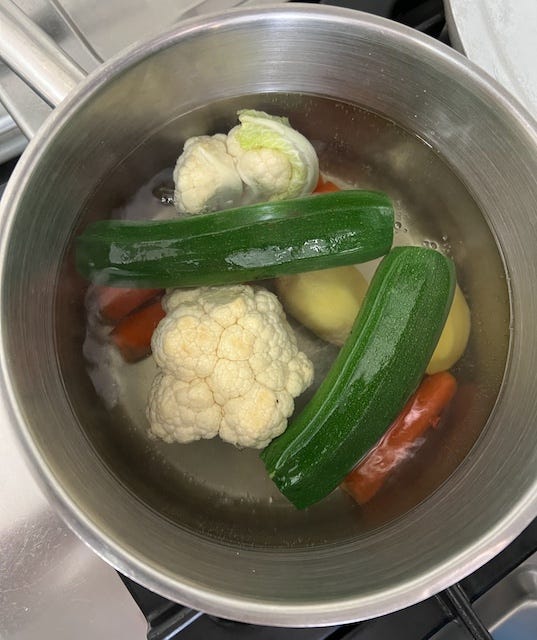
Sounds delicious 😋 I normally roast left over veg and turn it into bubble & squeak, but this is a great alternative. Will give it a go.